|
In summer I researched and wrote a new resource for history and heritage educators on behalf of Curious Minds. Drawing together examples from across the North West, covering an array of indoor and outdoor museum and heritage locations, it explores how schools and heritage organisations have worked together to help young people learn about their local history in cross-curricular ways. It's particularly relevant to the Key Stage 2 curricula but extends to KS1 and KS3 too. Browse or download above, or from my resources page.
Each case study includes - Description of a topic or activity - Objectives and outcomes of the activity - Practical activity suggestions to include in topics / lesson plans - Top tips for planning and practicalities - Links to further resources Includes five example case studies of projects by schools and museum or heritage sites working together cover these overarching themes: - Investigating a heritage site (through the ages and a timeline) - Investigating a local street (in this instance Victorian but transferable to other periods) - Investigating a historical period (Stone, Bronze and Iron ages) - Creative engagement with maths (using the art / design of Blackpool Illuminations to cover the full KS1 & 2 maths curriculum) - Exploring the local town (in this instance a coastal town with a migratory mining history) Current History links - the lives of significant individuals in the past who have contributed to national and international achievements - significant historical events, people and places in their own locality - changes in Britain from the Stone Age to the Iron Age - a study of an aspect or theme in British history that extends pupils’ chronological knowledge beyond 1066 - ideas, political power, industry and empire: Britain, 1745-1901 With a foreward from Prof. Kerri Facer - education innovator and advocate for place-based curricula.
0 Comments
A few years back, I worked on a three year contract supporting organisational change in a group of universities who were starting to come to terms with a then brand new agenda, where academics and researchers needed to become more outwards facing, connecting with the public on their doorstep and at large. Part of my role was to mentor internal directors and project managers, and the departments they worked with, in looking for the impact of their activities. Like many major programmes, the initiative had a quite intense, technical, formal, robust evaluation system underpinning it. Like many organisations, this was not the fun part of anyone's work, and on top of everything else going on, was not generally what most people were interested in prioritising. In my mentoring role, I wanted to increase people's confidence about being able to carry out evaluation that was realistic and meaningful, and reduce their fear of becoming overwhelmed. At the same time, some of the community groups involved had been saying their previous experiences of evaluation in university programmes had, at times, been overwhelming, invasive, and one-sided.
As a result, I created a simple, practical, set of suggestions to make evaluation do-able, useful, positive and meaningful. It simply offered these ten top tips, and five years later with the huge amount of learning I've developed about evaluation, they still absolutely stand the test of time...
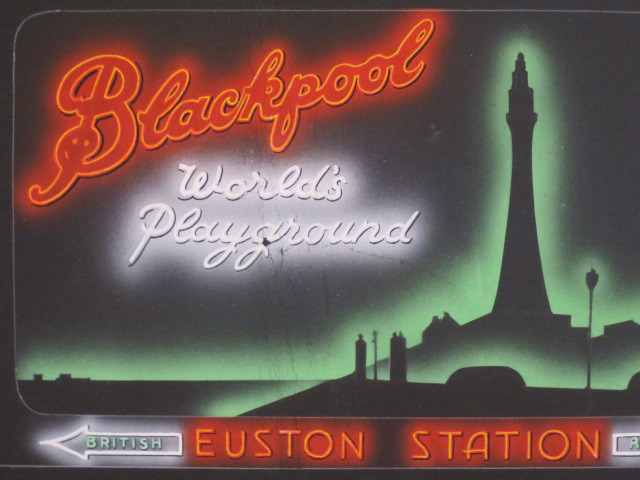 I am so very lucky to be able to get involved with such a wide variety of projects. In each one I love to find out about new collections, artworks, exhibits, activities and the people behind them or indeed at the receiving end. Right now I'm writing a resource pack for Curious Minds which looks at how local heritage can be used to work with schools towards an area based curriculum. The resource will include several case studies, one of which features Blackpool Illuminations. It's little known that the Illuminations have a historic archive, or that they are all designed and made in Blackpool itself, at a design and manufacture depot called Lightworks. You might like to read this excellent page about where the magic happens. Many images from the archive of illuminations artwork and some accompanying catalogue detail is available at the Illuminations blog right here. On occassion, Lightworks opens up for tours for special events and groups such as Heritage Open Days. A potted history of the illuminations is provided here. Further information is available here. Meanwhile, the Curious Minds resource, and another teaching resource produced by cultural team members of Blackpool council offering many ways to use the illuminations to support maths based learning - developed in close consultation with teachers, will all be available online to download as a pdf in due course. Image: Up for Promotion, copyright Blackpool Illuminations Collection 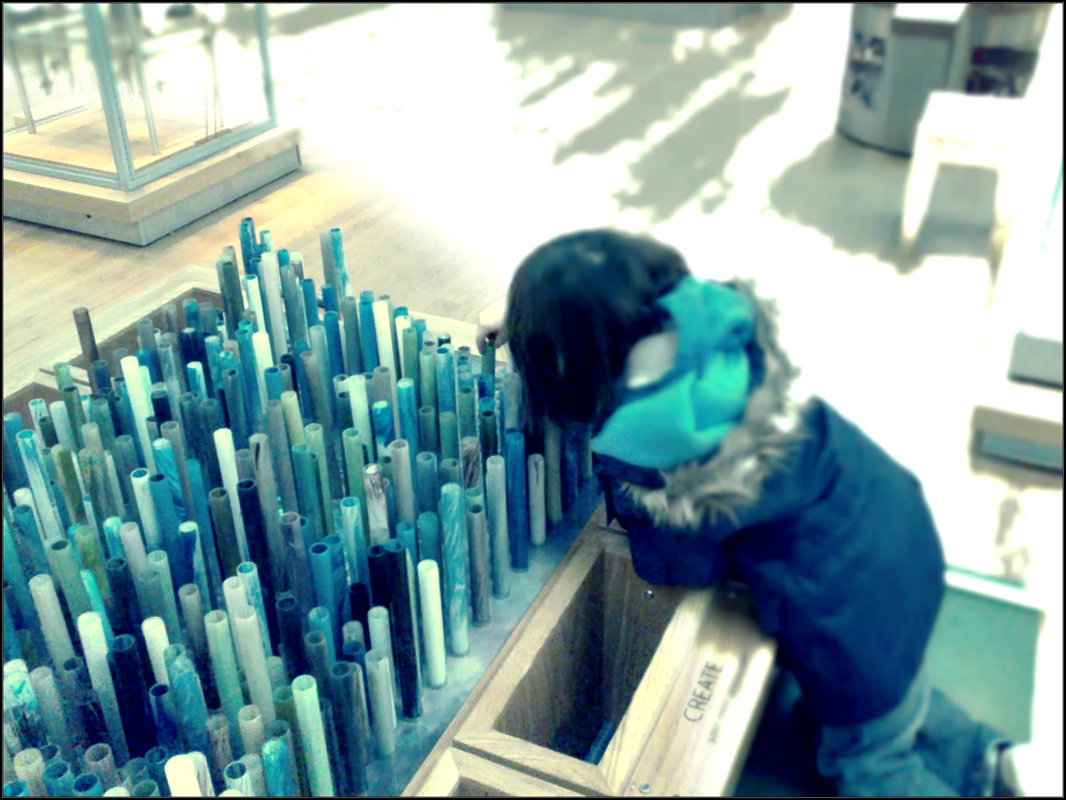 The relationship between museums and autism first began to percolate in my mind a few years ago and slowly I've been piecing together more and more learning and thinking. It's been accelerated lately for a number of reasons, each of which has some really useful learning for the museums (and wider cultural) landscape. In no particular order, they are presented below - take whatever learning and inspiration you can from it, and apply it in some way to your own work or thinking. Change is made one step at a time... 1. "If you've met one person with autism, you've met one person with autism" People who have autism each have their own version of it. Many such people share some of the characteristics, but one person's experience of autism could be almost unrecognisable to another. (Great blog post here if you're interested in more on that theme). 2. We're slow on the uptake. Cinemas have been programming autism friendly events for a few years now. Museums can a learn a lot here from their cultural counterparts. You could look up pretty much any cinema and find an autism friendly events listing. Try it. Why should museums be different? It's hard to try and assemble a single approach to becoming more autism friendly precisely because every person with autism has their own individual version of it. Whilst a good starting point is find out what you can, and do what you can with what you have (and read point 3 below), the cinema approach has taken a few core approaches: - lower lighting levels when lights are up [to help people with extra sensitivity to bright light] - lower volume levels [for people with extra sensitivity to sound / reverberations] - trailers are removed from the show [reducing the time needed to be in a different environment or the time needed to focus] - taking own food / drinks is encouraged [special dietary needs are common with autism] - moving round the cinema is fine whilst the film is showing [because sitting still and / or quiet for long periods is a challenge for some people with autism]. Simple adaptations, no cost involved. 3. We have an excellent champion working from the inside out. She won't thank me for cheerleading her work because she's a modest and unassuming sort of person, but over on Twitter you can follow Tincture of Museum, 'Volunteer at Museum of London, Horniman Museum and Bromley Museum; blogger; mum; advocate of autism in museums'. She's a gentle and hugely effective campaigner and writes very insightfully on this subject. Maybe start with this post from her blog. 4. Collectively, the museum profession is onto a good thing. There was a great question about how to successfully, sensitively and appropriately include some particular children with autism and other conditions posted on the Group for Education in Museums email list and some brilliant insight collated and shared back around by Dr Trudie Cole, Learning and Access Manager at Poole Museum Service. You'll find it all in the document at the bottom of this post. What an incredible body of knowledge and experience museum professionals have on this subject - pretty powerful when you put it all together. Likewise, the Science Museum have their Early Birds programme offering more quiet access for children with autism (both in terms of noise and visitor hustle and bustle); Manchester Art Gallery trialled their Open Doors programme for families with children on the autistic spectrum; and the RAF Museum have recently become the UK's first cultural venue to receive The Autism Access Award from the National Autistic Society. More here and here. There are more plans afoot and more conversations being had within the museum sector to push awareness and understanding up a gear. I'm sure this will soon become a big thing for our profession. 5. You can't necessarily spot museum staff (or people in general) with autism, and it's hard to put in an employment policy. This is a strange one that came about when I saw a post on twitter asking if anyone knew of any museums who employed people with autism. It would be unethical and illegal (in the UK at least) for an organisation like a museum to give any personal information out about any of their employees. And then there are further complications which would make it difficult even if technically, they could, but I think it's worth talking about these with the intention of building more understanding about the nature of having and working with autism... On the one hand I think you'd be hard pushed to find a museum of a decent size that didn't employ someone with autism (statistically autism is currently thought to occur in between 1 in 100, and 1 in 80 people in the UK, depending on which reports you read); and many facets of museum work would naturally attract certain skills and characteristics known to be part of the autistic spectrum. On the other, who would know? Autism is invisible. There are a range of associated conditions that can accompany autism which have physical manifestations but autism itself exists and plays out within the brain first and foremost. This leads to complications about identifying employees with autism since a) a person may not know they have it - it may never have occurred to someone that they may have it, and diagnosis levels in adults (particularly women) in the UK are low for various reasons b) a person may have self-diagnosed, but have no professional confirmation - so do they have it or not? c) if they know they have it, they may or may not have chosen to let their employer (or anyone else) know d) even if a museum were to have an actual pro-autism or targeted disability employment policy, see a, b and c above So, if for some reason you're interested in finding people with autism who work in museums, try and find the people, rather than the museums. 6. More here And finally - there is a long list of autism friendly work by museums around the world here (listed by Autism Speaks, though this is not an endorsement of that organisation. If you discover a list hosted elsewhere leave a comment, I would be happy to refer elsewhere instead when possible). ... thanks to Trudie Cole and Claire Madge for their help with putting this blog post together...
1/5/2011 One Small Step for Early Years, One Giant Leap for Children: a toolkit for creativity with young childrenRead NowThis time last year I was lucky enough to work with Isaacs UK and CAPE UK, exploring the work of artists and creative practitioners working with children and staff in ten early years settings across Leeds. They settings worked together as network, using Creative Partnerships' enquiry model of working to test out their activities. My role was to pull together everyone's learning, summarising shared findings and exceptional experiences, laying these out in a way which might be helpful for others looking for new and / or creative ways to unlock potential in their children. To round up a few of the ups and downs, things that worked, things that didn't work quite so much, and some of the thinking the creative and early years practitioners travelled through together or separately. At the heart of it all, to tell some of the stories of the children and how their outlook on the world changed a little as a result of the projects. On a more formal side, we looked at a couple of different ways of monitoring the progress of children - both in terms of the Foundation Stage areas, and in their wellbeing and involvement through a system known as EXE (Experiential Education). CAPE set some fantastic designers loose on the content I wrote with IsaacsUK, and the result is a really stunning and accessible looking publication. Please read, browse, enjoy and most importantly - pass it on to anyone who might make use of it. Browse or download it below, or online *here* 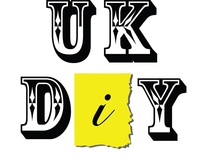 Way back in 2006 I received a grant from Arts Council England to research the DIY / subversive / home grown - whatever you want to call it - craft scene in the UK. The likes of what is now much more widely known; Etsy, Stitch and Bitch, yarnbombing (knitting attached to things in public as you may know it - lamposts, bike rails, bannisters etc).It was all going on in the US, but I wondered to what extent that was happening here too - if at all... In 2006 there really wasn't that much of this around. To set the scene, less than 300 UK people were registered on Etsy and people were still finding one another through MySpace. Which is where my research started. This week I'll be at a two day workshop exploring what craft and communities have in common, and what potential there is for craft and community being in the same mix. Much of the topics under the microscope will be the exact same ones that arose in my research. Eventually there will be a website where the Connecting Craft & The Community project will be shared more widely. But for the benefit of colleagues I'll be meeting in the next couple of days, and anyone else who is interested, here is the report produced in 2007, which summarised the work, and laid out some options to take the themes on into a programme of exhibitions, projects and events (which I'm happy to say did indeed happen.) So here's the report. To give you a flavour the contents page reads as follows... Defining DIY :: A Potted History :: Textiles :: Gender Stories :: Inclusivity & Anti-elitism :: Anti-consumerism & The Individual :: Political Crafting :: Interdisciplinary Content :: Street Crafting :: Sharing, Authorship and Currency :: Art & Anti-Art :: Entrepreneurialism :: Quality :: Exhibition & Project Potential :: Options and Recommendations Read or download as a pdf it below; or from google docs here; or contact me and I'll email it to you... I spent a huge amount of last year working with some amazing academic staff, researchers and community groups as they learned more about one another through creative projects as part of the Manchester Beacon for Public Engagement. My role was (and still is) to help what's happening at practice level link with a rather complex overarching evaluation framework. The Manchester Beacon programme is, in a nutshell, about encouraging learning institutions to better understand how to open themselves up to communities more effectively. An important part of that process is to trial new approaches and reflect on what works, or what could be improved. It's an action learning model really. The Beacon team and I identified that those involved in the practice needed support in being able to report back on their work in ways that fit the evaluation framework. So we set about producing some guidance for them, based on the input of community groups and a pilot cohort of academics and researchers. Fast forward many months and the evaluation guidance pack / toolkit I created with their help, and the help of other colleagues, is now freely available. It contains some basic principles of evaluation, hints and tips, templates, and examples of creative consultation. You can read or download it below; contact me for a copy; or read / download it here. On this page, you can also find some very short podcasts and top tips from some of the staff and community groups who have used the document. At the end of the pack there are also lots more links to further evaluation guidance in public engagement and also support created specifically for the fields of science communication; community engagement; arts and heritage; and health and wellbeing. All thoughts or comments welcome... I currently have a number of clients who, in some shape or form, are involved in being part of museums who are trying to become better friends with their communities. In order to be able to assist them in this as well as I can, and refresh my own thinking on the topic, I assembled a quick list of everything I ever knew about this sort of work - what to look out for, what to do, what not to do. I then sent a call out to all the lovely and helpful members of the GEM email list to see what insights they had on the same theme. Three months later I've finally collated it all under sub-headings and here it is; a short paper on things to be aware of if you're a museum working with local communities. In fact I'm sure much of it will be transferable to other types of organisations. I would especially like to thank everyone who did respond to the GEM email request, and sent me all sorts of papers, reports, observations, anecdotes and ponderings, particularly those who trusted me enough with what, in some cases, were quite hard lessons for their organisations to learn. I'd very much like the discussion to keep flowing so please do add comments, or include links to other relevant papers, reports etc below... 04.03.11 update... for the few people who let me know they haven't been able to see or save the document below - it's now also available as a straight forward pdf to read or download here or drop me a line via the comments pageand I'll happily email it to you 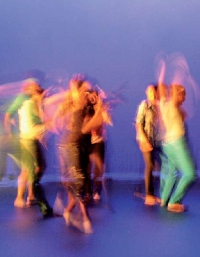 For several years there has been debate about the potential for using the arts to help improve literacy and numeracy (and other subjects). For many arts organisations being able to find ways to achieve this has been a necessity to survive. For some this raises discomfort, those who feel it's not what the arts are for and can run the risk of people losing sight of other benefits that perhaps are more intrinsic to artistic practice. Personally I don't choose one side or the other of the argument, there are truths and benefits (and no doubt pitfalls) either way. Though I do know this - for children and young people who for whatever reason are not as developed as their peers in language and numeracy skills, the arts can present a more accessible way to unpick learning that some other formats. I've seen it happen first hand. I can't say for sure it's specific to the arts - I do think it's something about a creative approach generally and the opportunity to work in different environments and include kinaesthetic activity. All of which is common, but not exclusive, to arts activity. However - last year I was asked to work with the inspirational arts producer Elizabeth Lynch to evaluate Performing for Success. An arts based project building on the proven achievements of Playing for Success (which used sports to improve young people's numeracy and literacy skills). It was a unique programme in that it met Extended School agendas and relied on partnerships between extended school deliverers experienced in sport, and arts or cultural organisations. However there was no national model, each pilot area approached the structure in different ways, some more effectively and successfully than others. It was DCFS funded initiative but not via the 'usual' channels (such as Find Your Talent or Creative Partnerships) but through an independent education contractor, Rex Hall Associates. In the current climate who can say what will happen to these kinds of initiatives. However if you'd like to read our response to the programme you can download it *here* UPDATE: I have learned that Rex Hall sadly passed away on May 31st. My experience of working with him was brief but so inspiring to see first hand the difference one person can make. My thoughts and wishes go to all of those close to him. 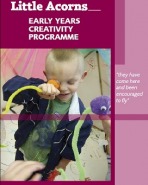 Unintentionally I have carved out something of a niche in my repertoire, in the form of evaluation. I'm not sure if its because I naturally love to disect and deconstruct what is seemingly apparent to see what else is really going on; or whether it's simply because other people don't enjoy it and are happy to hand it to someone else. (I'm lucky in that much of my evaluation work comes through recommendation). I know at times it's because organisations know in great detail so many things about what they do and the way they work, but need to be able to show that they have explored this objectively, and so hire an external consultant. Often I never know how much it influences organisations to change, adapt and experiment, though I have one client who I know does read them with a fine tooth comb, come back to me query and delve deeper into some parts, and act on it annually, which is very rewarding indeed. For reasons not exciting enough to share here, I spent much of today re-reading past evaluation reports and realising how fascinating this process of reflection really is. It was refreshing to read these again, with space and time, for what they really say, rather than in a proof reading and contract fulfilling, deadline looming frame of mind. |
Details
...BlogI'm most interested in how the public, your public, whoever that may be, engages with culture and creativity.
And if it nurtures creativity and develops personal, social or professional skills I'm absolutely all ears. Categories
All
Archives
May 2023
|
||||||

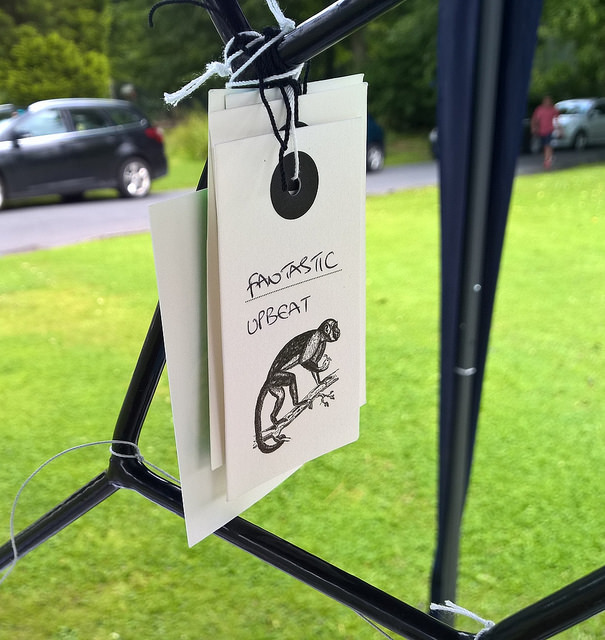
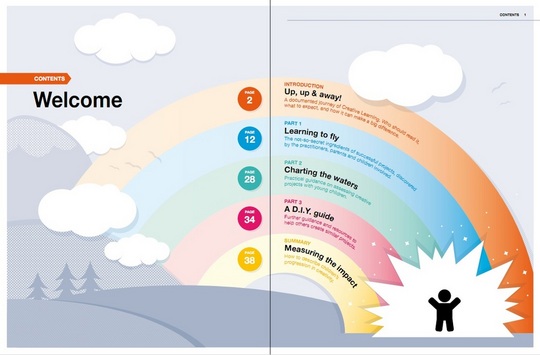

 RSS Feed
RSS Feed
